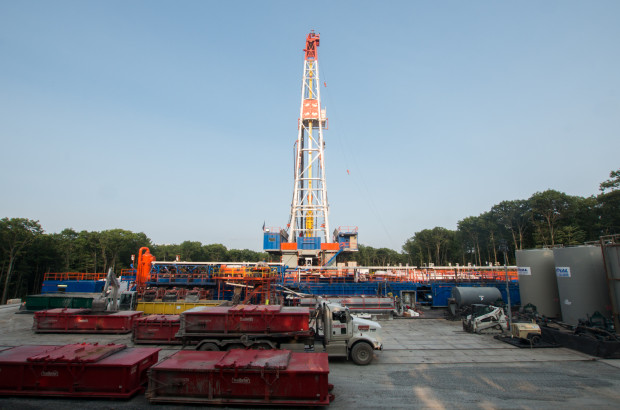Following audit, state recovers $1.3 million in gas royalties
-
Marie Cusick

Joe Ulrich / WITF
A natural gas rig in Pennsylvania's Tioga State Forest. Like private landowners, the state has disputed some of the royalty payments it's received from drillers.
Following internal audits over the past year, the Commonwealth of Pennsylvania has recovered $1.3 million in gas royalty money from drilling in state forests.
The Department of Conservation and Natural Resources (DCNR) has leased 386,000 acres of publicly-owned forest land for drilling, and like private landowners, it’s had problems getting paid properly. Recently the royalty disputes have led some local governments to try to halt production, alleging the gas is being stolen.
DCNR says it recovered the money between April 2015 and July 2016, after ramping up its auditing efforts and hiring a new accountant.
A 2014 Right-to-Know Law request by StateImpact Pennsylvania revealed the department has spent years disputing payments made by some drillers. Emails show the agency complaining about inaccurate or murky reporting on everything from how much gas is produced at wells, to its selling price.
DCNR wouldn’t say whether the $1.3 million represents the bulk of the disputed money, or if it believes it’s owed more. Earlier this year DCNR Secretary Cindy Dunn said when the department does find issues with royalty statements, the problems tend to favor drillers.
“The audit has definitely paid off,” Dunn said in February. “They usually haven’t paid us enough. If it were just a mistake you’d think half [the companies] would have paid too much and half would have paid too little, but the ‘pay too little’ outranks the ‘pay too much’ by a lot.”
DCNR spokesman Terry Brady says much of the $1.3 million came from enforcing language in its leases requiring drillers to pay 35 cents per thousand cubic feet, or a 20 percent royalty– whichever is higher. Because the price of gas has been so low, the 35 cent provision kicked in, rather than the 20 percent royalty.
















